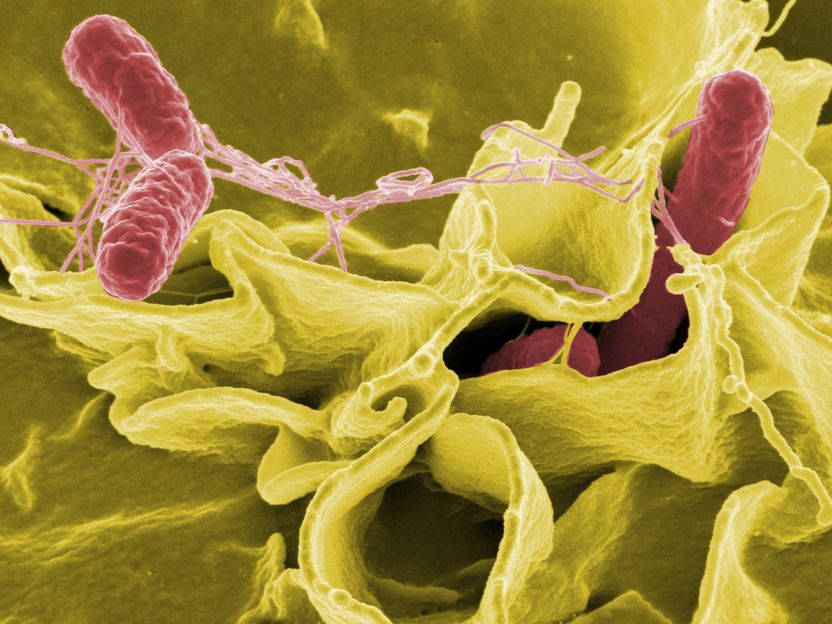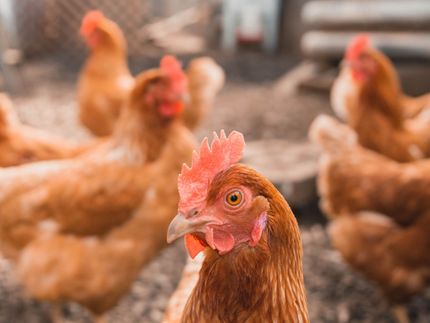Salmonella the most common cause of foodborne outbreaks in the European Union
Nearly one in three foodborne outbreaks in the EU in 2018 were caused by Salmonella. This is one of the main findings of the annual report on trends and sources of zoonoses published today by the European food safety Authority (EFSA) and the European Centre for Disease Prevention and Control (ECDC).

News Release 13-Dec-2019 Salmonella
In 2018, EU Member States reported 5 146 foodborne outbreaks affecting 48 365 people. A foodborne disease outbreak is an incident during which at least two people contract the same illness from the same contaminated food or drink.
Slovakia, Spain and Poland accounted for 67% of the 1581 Salmonella outbreaks. These outbreaks were mainly linked to eggs.
"Findings from our latest Eurobarometer show that less than one third of European citizens rank food poisoning from bacteria among their top five concerns when it comes to food safety. The number of reported outbreaks suggests that there's room for raising awareness among consumers as many foodborne illnesses are preventable by improving hygiene measures when handling and preparing food" said EFSA's chief scientist Marta Hugas.
Salmonellosis was the second most commonly reported gastrointestinal infection in humans in the EU (91 857 cases reported), after campylobacteriosis (246,571).
West Nile virus and STEC infections at unusually high levels
By far the highest increase in the zoonoses covered by this report was in the number of West Nile virus infections. Cases of this zoonotic mosquito-borne disease were seven times higher than in 2017 (1605 versus 212) and exceeded all cases reported between 2011 and 2017.
"The reasons for the peak in 2018 are not fully understood yet. Factors like temperature, humidity or rainfall have been shown to influence seasonal activity of mosquitoes and may have played a role. While we cannot predict how intense the next transmission seasons will be, we know that the West Nile virus is actively circulating in many countries in the EU, affecting humans, horses and birds. ECDC is stepping up its support to countries in the areas of surveillance, preparedness, communication and vector control", said ECDC's chief scientist Mike Catchpole.
Most locally acquired West Nile virus infections were reported by Italy (610), Greece (315) and Romania (277). Czechia and Slovenia reported their first cases since 2013. Italy and Hungary have also registered an increasing number of West Nile virus outbreaks in horses and other equine species in recent years.
Shiga toxin-producing E. coli (STEC) has become the third most common cause of foodborne zoonotic disease with 8 161 reported cases - replacing yersiniosis with a 37% increase compared to 2017. This may be partly explained by the growing use of new laboratory technologies, making the detection of sporadic cases easier.
The number of people affected by listeriosis in 2018 is similar to 2017 (2 549 in 2018 against 2 480 the previous year). However, the trend has been upward over the past ten years. Of the zoonotic diseases covered by the report, listeriosis accounts for the highest proportion of hospitalised cases (97%) and highest number of deaths (229), making it one of the most serious foodborne diseases.
The report also includes data on Mycobacterium bovis, Brucella, Yersinia, Trichinella, Echinococcus, Toxoplasma, rabies, Coxiella burnetii (Q fever), and tularaemia.
Other news from the department business & finance
Most read news
More news from our other portals
See the theme worlds for related content
Topic world Food safety
Food safety is at the heart of the food and beverage industry. It ensures that the food we eat every day is not only nutritious, but also free of harmful contaminants. From field to plate, the industry monitors and regulates every step of the process with strict quality controls, advanced testing methods and continuous research.

Topic world Food safety
Food safety is at the heart of the food and beverage industry. It ensures that the food we eat every day is not only nutritious, but also free of harmful contaminants. From field to plate, the industry monitors and regulates every step of the process with strict quality controls, advanced testing methods and continuous research.































































